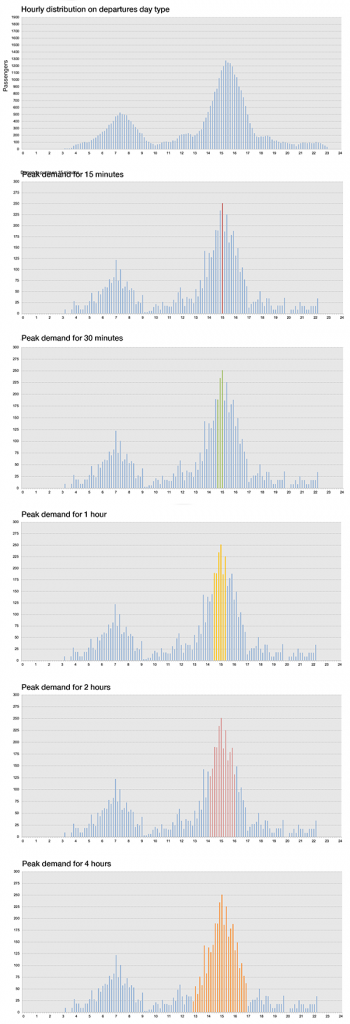For more than 50 years, the IATA Airport Development Reference Manual (ADRM) has been the benchmark for excellence in airport design worldwide.
An update to this reference guide is therefore essential in order to maintain excellence.
The 11th edition of the IATA and ACI ADRM was published a few days ago, with some interesting changes and a great deal of relevant information for those of us who work directly or indirectly in airport design.
From the point of view of terminal design, the Level of Service (LOS) concept has been updated in order to include the Automatic Border Control (ABC) process in both departures and arrivals. And most importantly, new methodology and formulas have been included for the analysis of terminal capacity.
As far as the methodology is concerned, the design day is obtained by segregating the demand profiles as much as necessary, depending on the airport we are designing. For example, we can obtain the profile by segregating into tourist class, business class, first class and fast-track users, or we can represent the passenger profile according to the type of company (low cost, traditional company, air bridge, charter, etc.).
Once the profiles and distribution over the whole day have been obtained, we can calculate not only the peak for one hour (the Peak-Hour Passenger parameter), but also the peak demand for time periods of 15 minutes, 30 minutes, 2 hours and 4 hours.
With the new formulas we will obtain the number of resources and equipment we need for each process (check-in, security, passport control, etc.) for the calculated peak periods (15 minutes, 30 minutes, 1 hour, 2 hours and 4 hours). The most restrictive number will be the one that defines the resource and equipment needs and, from this number, the corresponding area for queues.
A new section on Airport Technology is also included in view of the changes that technology has been driving in airport operations in recent decades, and especially in view of expected future changes. While IT strategies must be airport specific, common development is primarily geared towards improving passenger experience, optimising operational processes and improving financial performance.
It also includes a section on A-CDM (Airport Collaborative Decision-Making), the implementation of which aims to improve the overall efficiency of airport operations by optimising the use of resources and improving the predictability of events. This methodology is being implemented all over the world, so it is necessary to develop it within the ADRM.
Of particular interest is the expansion of the ORAT section (Operational Readiness and Airport Transfer), which includes a series of lessons learned in the opening of new airport facilities that serves as an approximation to the ORAT process.
Also included are new sections on baggage handling, commercial development and fuel infrastructure, and an expanded section on the use of MARS parking spaces and on signalling and wayfinding at the terminal.
In short, this new edition of the Airport Development Reference Manual (ADRM) is an important update that reflects the rapid and significant changes that have taken place in the airport world in recent years. It also lays the groundwork for covering the major technological changes that are expected to arrive shortly.




